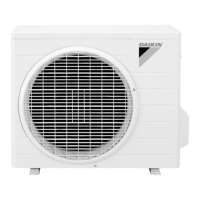What to do if Daikin RK35JV1NB operation stops suddenly and the OPERATION lamp blinks?
- GGerald EdwardsAug 14, 2025
If your Daikin Inverter stops suddenly and the OPERATION lamp is blinking, clean the air filters or remove any obstacles. Then, turn the breaker OFF, turn it back ON, and try operating the air conditioner using the remote controller.



